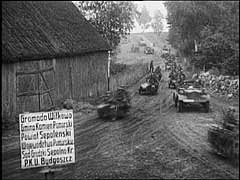You searched for: 余额宝理财系统搭建【TG���������@EK7676】平台包网搭建余额宝理财系统搭建【TG���������@EK7676】平台包网搭建1tVO4utgRM
<< Previous | Displaying results 251-275 of 653 for "余额宝理财系统搭建【TG���������@EK7676】平台包网搭建余额宝理财系统搭建【TG���������@EK7676】平台包网搭建1tVO4utgRM" | Next >>
-
View of a criminal wing in the prison at Nuremberg
PhotoView of a criminal wing in the prison at Nuremberg, housing war crimes trials defendants. Baltic guards under the supervision of American authorities patrol the wing and keep constant watch over the prisoners. The upper floors are screened off with heavy chicken wire to discourage suicide attempts. Nuremberg, Germany, between November 20, 1945, and October 1, 1946.
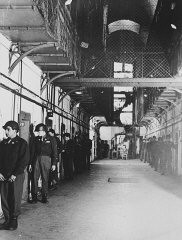
-
Newspaper headlines about the sentences given at the International Military Tribunal
PhotoAn American correspondent reads a special edition of the Nürnberger newspaper reporting the sentences handed down by the International Military Tribunal. Nuremberg, Germany, October 1, 1946.
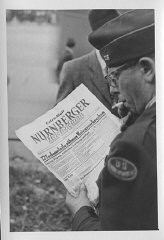
-
Defendant Fritz Sauckel
PhotoFritz Sauckel follows the proceedings of the International Military Tribunal trial of war criminals at Nuremberg. He was found guilty of war crimes and crimes against humanity and was sentenced to death. Photograph taken in Nuremberg, Germany, between November 20, 1945, and October 1, 1946.
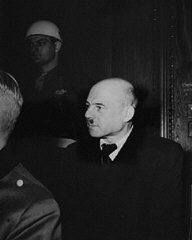
-
Boycott of Jewish-owned businesses
PhotoMembers of the Storm Troopers (SA), with boycott signs, block the entrance to a Jewish-owned shop. One of the signs exhorts: "Germans! Defend yourselves! Don't buy from Jews!" Berlin, Germany, April 1, 1933.
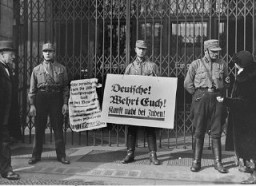
-
Insignia of the 1st Infantry Division
PhotoInsignia of the 1st Infantry Division. The 1st Infantry Division's nickname, the "Big Red One," originated from the division's insignia, a large red number "1" on a khaki field. This nickname was adopted during World War I, when the 1st was the first American division to arrive in France.
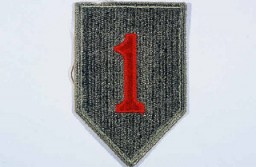
-
Ion Antonescu before his execution
PhotoFormer Romanian prime minister Ion Antonescu (center) before his execution as a war criminal. Fort Jivava, near Bucharest, Romania, June 1, 1946.
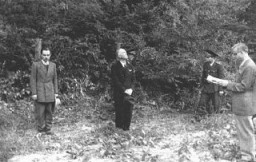
-
Aliyah Bet ("illegal" immigration) ship Tiger Hill
PhotoAliyah Bet ("illegal" immigration) ship Tiger Hill, carrying Jewish refugees from Europe, lands in Tel Aviv, Palestine. Jewish residents of Palestine greet the ship. September 1, 1939.
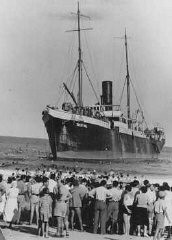
-
Signing of the Tripartite Pact
PhotoBulgarian leader Bogdan Filov (standing) and German foreign minister Joachim von Ribbentrop (seated, center) during the signing of the Tripartite Pact. This treaty formally aligned Bulgaria with the Axis powers. Vienna, Austria, March 1, 1941.
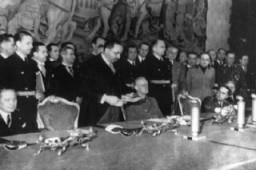
-
Liberated inmates of Dora-Mittelbau
PhotoLiberated inmates of the Dora-Mittelbau concentration camp, located near Nordhausen, view an area where camouflaged V-1 and V-2 rocket parts were stored. Germany, after April 11, 1945.
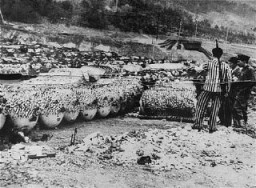
-
US delegation views an underground factory at Dora-Mittelbau
PhotoMembers of a US congressional committee investigating German atrocities view a V-2 rocket on the assembly line of an underground factory at the Dora-Mittelbau concentration camp, near Nordhausen. Germany, May 1, 1945.

-
Aftermath of pogrom in Iasi
PhotoRoma (Gypsies) remove bodies from the Iasi-Calarasi death train during its stop in Tirgu-Frumos. Two trains left Iasi on June 30, 1941, bearing survivors of the pogrom that took place in Iasi on June 28-29. Hundreds of Jews died on the transports aboard crowded, unventilated freight cars in the heat of summer. Romania, July 1, 1941.
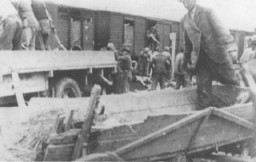
-
Excerpts from the President's Commission Report
ArticleIn 1978, the President's Commission on the Holocaust was charged with submitting a report on the creation of a Holocaust memorial in the US. Read excerpts.
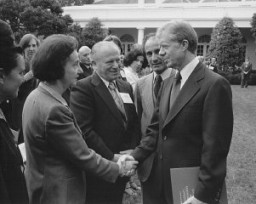
-
Law against the Founding of New Parties
ArticleThe Law against the Founding of New Parties proclaimed the Nazi Party as the only political party in Germany, which became a one-party dictatorship led by the Nazis.
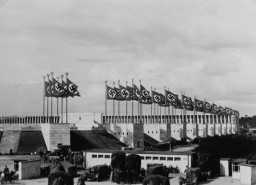
-
Roma (Gypsies) in Prewar Europe
ArticleFor centuries, Roma (labeled “Gypsies”) were scorned across Europe. Read more about Romani peoples, including the Sinti, and their lives in Europe.
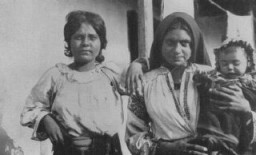
-
Ona Simaite, Joop Westerweel, Irena Sendler
ArticleLearn about the rescue activities and the fates of Ona Simaite in Lithuania, Joop Westerweel in the Netherlands, and Irena Sendler in Poland.
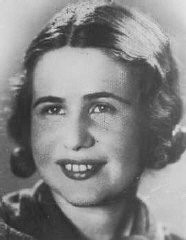
-
Fire Oaths
Article“Fire Oaths” were statements that declared why the works of certain authors were thrown into the flames during the 1933 burning of books under the Nazi regime.

-
Bad Reichenhall Displaced Persons Camp
ArticleAfter WWII, many Holocaust survivors, unable to return to their homes, lived in displaced persons camps in Germany, Austria, and Italy. Read about Bad Reichenhall DP camp.
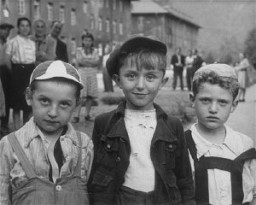
-
Nazi officials and Catholic bishops listen to a speech by Wilhelm Frick
PhotoNazi officials and Catholic bishops listen to a speech by Wilhelm Frick, Reich Minister of the Interior, at an official ceremony in the Saarbrucken city hall marking the reincorporation of the Saarland into the German Reich. March 1, 1935. Among those pictured is Joseph Goebbels (seated at the far right), Franz Rudolf Bornewasser (Bishop of Trier) and Ludwig Sebastian (Bishop of Speyer).
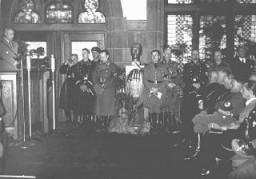
-
The 800-meter race at the 1936 Olympic Games
PhotoRunners competing in the 800-meter race at the Olympic games in Berlin. In this photograph, American John Woodruff is just visible in the outside lane. He came from behind to win the race in 1:52.9 minutes. Source record ID: 95/73/12A.
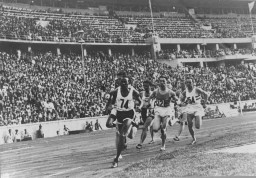
-
Britain and France Declare War
Timeline EventSeptember 3, 1939. On this date, Great Britain and France declared war on Germany after the German invasion of Poland.
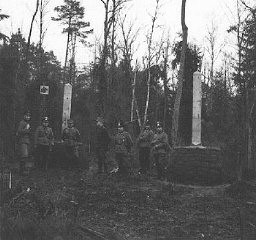
-
Adolf Hitler passes through the Brandenburg Gate on his way to the opening ceremonies of the Olympic Games
PhotoAdolf Hitler passes through the Brandenburg Gate on the way to the opening ceremonies of the Olympic Games. Berlin, Germany, August 1, 1936.
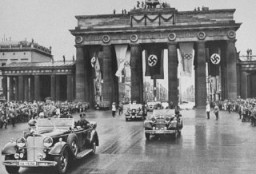
-
Albert Speer standing in the defendants' dock at Nuremberg
PhotoThe defendants and their lawyers at the International Military Tribunal trial of war criminals at Nuremberg. Defendant Albert Speer (standing at right) delivers a statement in the dock. Nuremberg, Germany, November 20, 1945-October 1, 1946.
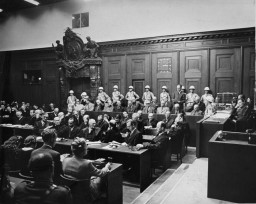
-
Destruction in Warsaw
PhotoFollowing the German invasion of Poland on September 1, 1939, Warsaw suffered heavy air attacks and artillery bombardment. German troops entered the city on September 29, shortly after its surrender. This photograph was taken by Julien Bryan, an American documentary filmmaker who captured the German bombardment and its impact on the Polish citizenry. Warsaw, Poland, ca. 1939.
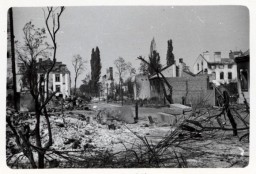
-
Portrait of writer Sigrid Undset
PhotoPortrait of writer Sigrid Undset, who won the Nobel Prize for Literature in 1928. Often with feminist themes, her novels were banned and burned in part because of her public criticism of the Nazi regime. Photo taken by Anders Beer Wilse on July 1, 1923.
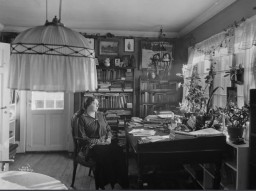
-
Germany invades Poland
FilmGermany invaded Poland on September 1, 1939, beginning World War II. Quickly overrunning Polish border defenses, German forces advanced towards Warsaw, the Polish capital city. This footage from German newsreels shows German forces in action during the invasion of Poland. Warsaw surrendered on September 28, 1939.
